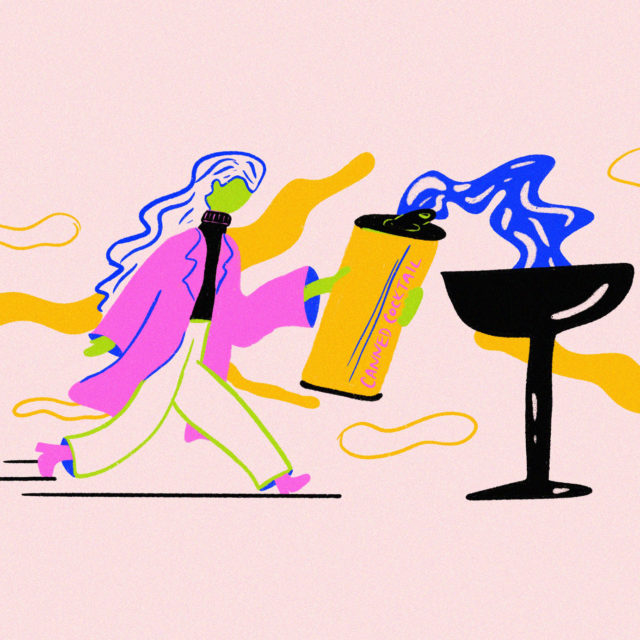Convenience is key in today’s drinking landscape. Even before the coronavirus pandemic forced widespread bar closures, consumers were increasingly reaching for ready-to-drink (RTD) alcoholic beverages. The RTD category grew 80 percent in 2019 and ended the year with a total value of more than $100 million, according to consumer analytics firm Nielsen.
This year’s unique circumstances have only fueled further growth, with conveniently packaged RTDs offering the ideal solution for socially distanced drinking occasions. According to global analytics firm IWSR, RTDs now hold a 6 percent volume share of total beverage alcohol in the U.S. Over the next five years, IWSR forecasts that RTDs’ volume share will overtake that of the entire spirits category stateside.
This staggering prediction comes with the not insignificant caveat that IWSR includes hard seltzers as a type of RTD, while other firms such as Nielsen do not. Though hard seltzers account for 50 percent of the RTD category (per IWSR tracking), Brandy Rand, COO of the Americas at IWSR, says there is still significant opportunity within the space for canned cocktail brands and other seltzer-like products. “Demand for higher-quality, pre-mixed beverages in a convenient format, coupled with overall U.S. trends toward health and wellness, shows no signs of slowing down over the coming years,” Rand says.
This continued demand will no doubt spur innovators wishing to enter the RTD space. But along with that opportunity comes inherent challenges and considerations — particularly for start-up brands. From developing a base recipe for the product to getting to market and growing distribution, entering the RTD space can take years. Here, we outline how existing brands within the category have been able to do so, and share the challenges they report from their journeys.
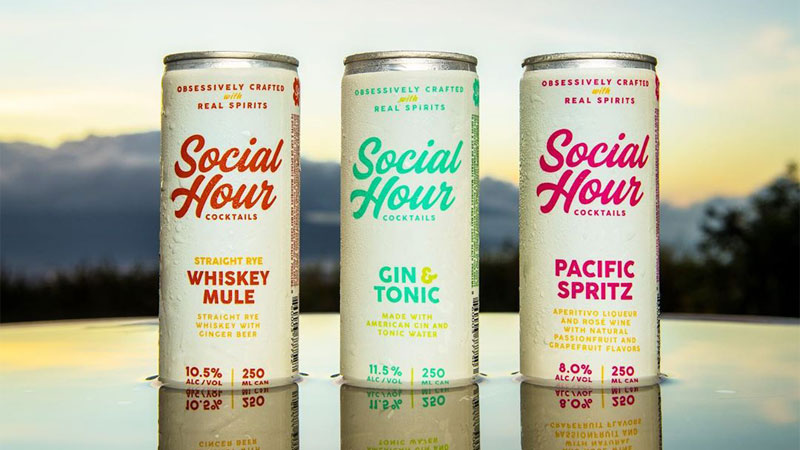
Crafting an RTD Recipe
Many of the lengthy list of tasks to complete and boxes to check before launching an RTD brand overlap with taking a wine or beer to market; think TTB applications and branding concepts. One major challenge that’s unique to RTDs, however, is developing a recipe for the product and connecting with manufacturers that will be able to execute it.
Earlier this year, prominent New York City bartenders Tom Macy and Julie Reiner launched Social Hour Cocktails. The RTD brand debuted with three flavors: Gin and Tonic, Whiskey Mule, and Pacific Spritz. While the launch came during the pandemic, a period that’s proven lucrative for canned cocktails, Reiner insists Social Hour is not a “pandemic creation.” Macy played around with the notion of launching an RTD cocktail brand for years and first started working on the project seriously in 2018.
One of the lengthiest aspects of the process was recipe development, Macy says. From day one, the goal was to create a product that was “as good or better” than anything they could make behind the bar, which took longer than he expected and was a stark departure from developing recipes for a bar. “There’s no silver bullet; you’ve just got to do the work to make the recipes perfect,” Macy says.
That hard work revolves around tasting recipes with different base ingredients and proportions, and in the case of drinks like the G&T, with varying levels of carbonation. Only then is it possible to determine what each component is contributing and how it affects other ingredients, Macy explains. And only then can improvements be made.
Still, Macy suggests that those looking to enter the space now should find some aspects of recipe development easier than when he began. When Macy and Reiner were developing the recipes for Social Hour’s cocktails, the manufacturers and flavor suppliers didn’t have a frame of reference for what they were trying to create. Given the rapid expansion of the category in those intervening years, Macy expects this is no longer the case.
One vital consideration during recipe creation is the base alcohol for the RTD. While the alcohol laws for all 50 states are unique, opting for a malt- or cane-based brewed alcohol (the same used in most hard seltzers) will generally allow that product to be sold in grocery stores. This offers a much broader range of retail opportunities than just wine and liquor stores, but crafting an authentic tasting G&T without the gin can prove extremely difficult. For those thinking of launching cocktails with a citrus element — such as the lime in a Margarita — there’s a range of other complications to navigate.
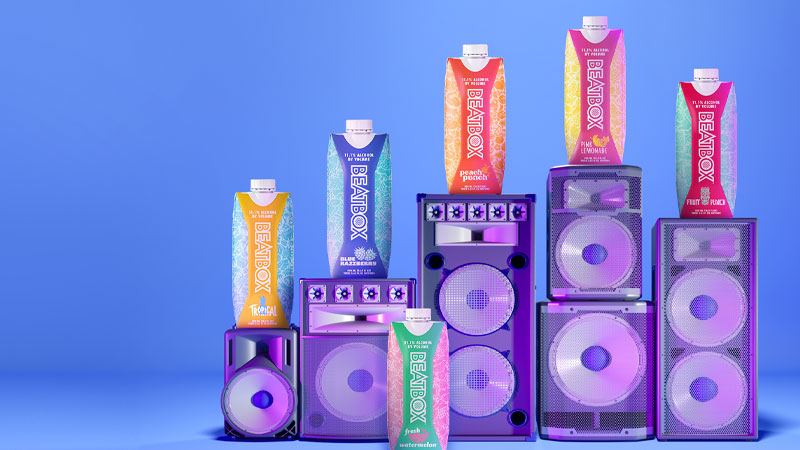
The Importance of Packaging
Recipe secured, the next hurdle comes in the form of packaging. While RTDs have become somewhat synonymous with cans, by no means are they the only option. And within the aluminum can space, there are multiple options to consider, each with its own positives and negatives.
Texas-based Aimy Steadman co-founded BeatBox Beverages in 2011, along with Justin Fenchel and Brad Schultz. BeatBox packages its six flavored wines, or “Party Punches,” in 500-milliliter Tetra Pak cartons. Steadman says they chose the packaging for its environmental benefits and the convenience it offers.
At 11.1 percent ABV, each container holds the alcohol equivalent of four light beers. The half-liter volume makes it a great option to share, but the fact that the containers are resealable means consumers don’t have to finish the beverage in one sitting if they’re drinking alone, Steadman says.
Working with Tetra Pak has had other unexpected advantages in recent years. In 2020, alcohol producers have had to contend with widespread aluminum can shortages. “For small companies, trying to get time with a co-packer or trying to get cans [relies on] finding good partners that will help you punch above your weight,” Steadman says.
Those who do go down the aluminum can route should carefully consider container sizes. Five Drinks Co. launched its line of craft RTD cocktails in 2019. The Miami-based brand packages its line of drinks in 6.8-ounce cans, which are designed to serve the exact same pour one would receive when ordering a Margarita or Paloma (over ice) in a bar.
It’s an option that once again offers the benefit of convenience but also has inherent obstacles, as this can size is not as widely produced as standard 12- or 16-ounce containers. “On the supply side, the biggest challenge is thinking ahead,” says Felipe Szpigel, one of the brand’s five co-founders. “As we expand we have to look many months down the road and guarantee that we have supply options.”
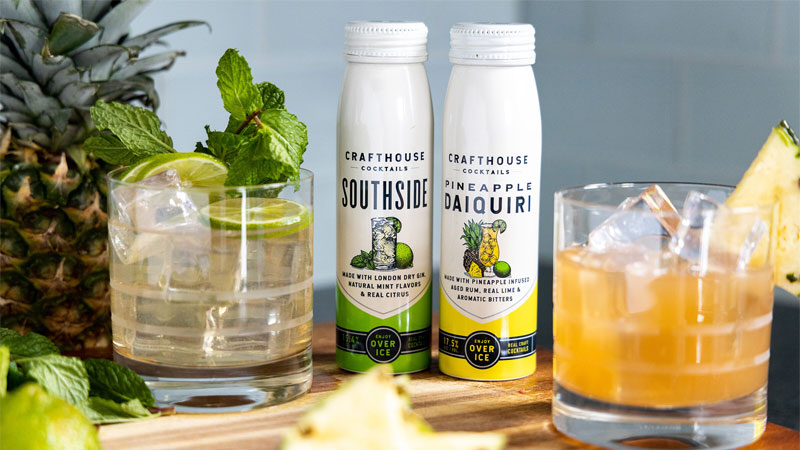
Distribution: The Biggest Hurdle of All
When recipes and packaging are taken care of, then the hard work begins. Perhaps the biggest challenge facing all alcohol producers in the U.S. is building a distribution network, and the still-nascent RTD category is no different.
Chicago-based hospitality duo Charles Joly and Matt Lindner launched Crafthouse Cocktails in 2013. By the end of this year, the brand’s cocktails, which arrive in a range of packaging formats and sizes, will be available in 20 states. By the end of Q1 next year, Lindner projects that Crafthouse’s products will retail in about 35 states.
One of the primary reasons it’s taken seven years to arrive at this point is the complex nature of alcohol distribution in the United States. “The three-tier system is a mess. It’s very difficult to navigate at a national level,” Joly says.
Though national distribution may seem like the holy grail for alcohol brands, Joly cautions against expanding too rapidly.
“Being in the business for a long time, I’ve worked with a lot of start-up brands, helping them with R&D, recipes, and promotion,” he says. Many of those brands have had substantial start-up budgets and use them to go national as soon as possible, Joly says, because they think they should be in all 50 states. “Two years later, they tank because they spread themselves so thin,” he adds.
Rather than merely focusing on off-premise channels to fuel growth, Crafthouse has found success via partnerships with Mariott and Amtrak and will soon be available on Virgin Voyages. The convenience of RTDs makes them ideal for retail, but Crafthouse proves that potential brands should not overlook on-premise opportunities (when they return).
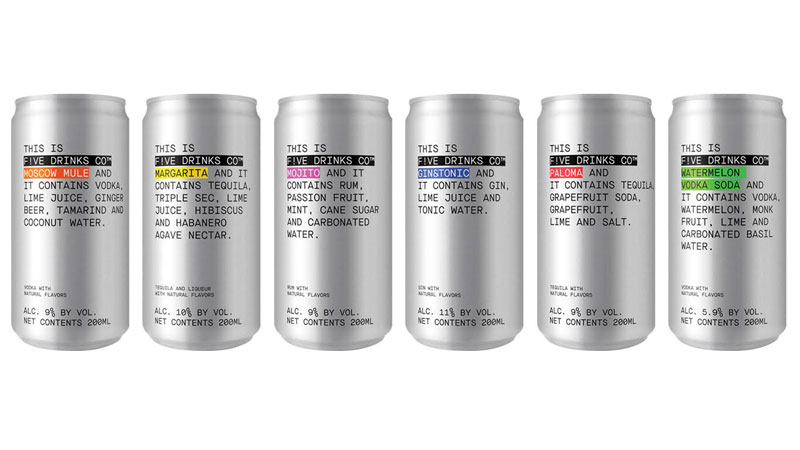
Standing Out In the Crowd
As ever more established, large-scale brands release RTD product extensions, start-ups must get creative to attract consumer attention and compete against heavyweight marketing budgets.
Earlier this year, Five Drinks launched three new cocktails that it created in collaboration with New York cocktail bar Dante, which was crowned World’s Best Bar at the 2019 World’s 50 Best Bars awards. “Collaborating with the best bar in the world and getting some of their recipes in a can is a great way of telling consumers we’re different, and shows our pride for real ingredients and quality cocktails,” Szpigel says.
BeatBox has aimed to connect with drinkers both online and in person. The brand has more than 40,000 followers on Instagram; its feed feels authentic and doesn’t come across as overly curated or polished. “We listen to our customers and hang out with them at music festivals — hopefully we will be able to do that again soon,” Steadman says. “I think that’s what differentiates us from the millions of innovations we’ve seen since we launched in 2013.”
Crafthouse’s Joly and Lindner also stress the importance of connecting with consumers on a grassroots level. “We’re on the streets all the time, talking to people, giving a taste of our products, and letting them know what we’re about,” Lindner says.
“You can have liquid gold in a bottle,” Joly adds. “But if people don’t know about it, it doesn’t matter.”
This story is a part of VP Pro, our free platform and newsletter for drinks industry professionals, covering wine, beer, liquor, and beyond. Sign up for VP Pro now!
